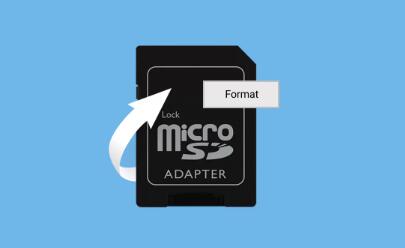SD cards are ubiquitous in our digital lives, used in everything from cameras to smartphones and gaming consoles. However, they can sometimes become corrupted or unresponsive, leading to a potential loss of valuable data. While formatting is a common solution, it often results in permanent data loss.
Section 1: Identifying the Problem
Common Symptoms of SD Card Issues
Before attempting repairs, it’s crucial to identify the problem. Common symptoms include:
Inaccessible Files: Files appear to be missing or inaccessible.
Error Messages: Messages such as “SD card not recognized” or “Card is not formatted.”
Slow Performance: The card takes a long time to open or transfer files.
Read/Write Errors: Issues occur when trying to save or open files.

Diagnosing the Issue
Physical Inspection: Check for any physical damage to the card or card slot.
Test in Different Devices: Insert the SD card into different devices (like another camera or computer) to see if the issue persists.
Use a Different Card Reader: Sometimes, the card reader can be faulty. Testing with a different reader can help isolate the problem.
Section 2: Basic Troubleshooting Steps
Step 1: Check Connections
Ensure the SD card is properly inserted. Remove and reinsert it to ensure a secure connection.
Clean the contacts of the SD card gently with a soft cloth to remove any dust or dirt.
Step 2: Restart Your Device
Sometimes, a simple restart of the device can resolve temporary glitches that may cause the SD card to malfunction.
Step 3: Enable and Disable the Write Protection
Many SD cards have a physical switch to enable or disable write protection. Ensure this switch is in the correct position.
Section 3: Software Solutions
Using Data Recovery Tools
If your SD card is accessible but files are missing, data recovery software can help.
Recommended Software
Panda Assistant is a cutting-edge data recovery software designed to help users recover lost or deleted files from various storage devices, including SD cards, external hard drives, and USB drives. With its user-friendly interface, Panda Assistant simplifies the data recovery process, making it accessible for both novice and experienced users. The software employs advanced algorithms to scan for recoverable files, ensuring a high success rate in restoring your precious data.
Key features of Panda Assistant include deep scanning capabilities that thoroughly examine storage devices for lost files, a preview function that allows users to view recoverable items before restoration, and support for a wide range of file types, including documents, images, and videos. Additionally, Panda Assistant is compatible with multiple operating systems, ensuring versatility for users across different platforms.
Steps to Use Recovery Software
Download and Install: Choose one of the recovery tools and install it on your computer.
Scan the SD Card:
Open the software and select your SD card from the list of drives.
Start a deep scan to search for lost files.
Recover Files:
Once the scan is complete, browse through the recoverable files.
Select the files you want to recover and follow the prompts to restore them.
Repairing File System Errors
If the SD card is accessible but showing errors, using Windows Check Disk (CHKDSK) can help repair file system issues without formatting.
How to Use CHKDSK
Open Command Prompt: Press Windows + R, type cmd, and hit Enter.
Run CHKDSK:
Type chkdsk X: /f (replace X with the drive letter of your SD card).
Press Enter. This will scan and repair any file system errors.
Using Disk Management Tools
If your SD card is not recognized, assigning a new drive letter may help.
Steps to Assign a Drive Letter
Open Disk Management: Right-click on ‘This PC’ or ‘My Computer’ and select ‘Manage.’ Choose ‘Disk Management.’
Find Your SD Card: Locate the SD card in the list of drives.
Assign New Drive Letter:
Right-click on the SD card and select ‘Change Drive Letter and Paths.’
Click ‘Add’ and choose a new letter from the dropdown menu.
Section 4: Advanced Techniques
Using Command Prompt for Advanced Repairs
Using DISKPART:
Open Command Prompt as an administrator.
Type diskpart and press Enter.
Type list disk to see all connected drives.
Identify your SD card and type select disk X (replace X with the disk number).
You can run various commands like clean, convert, and attributes to manage the SD card.
Using Other Commands:
format fs=fat32 quick (for reformatting without losing data, only if you have backups).
assign to assign a drive letter.
Using Third-Party Repair Tools
MiniTool Partition Wizard: This tool can help fix partition errors.
Install the software and launch it.
Locate your SD card and select ‘Check File System’ to scan for errors.
Stellar Repair for Photo: If your issue is related to corrupted images, this tool can help restore them without losing other data.
Section 5: Preventative Measures
Best Practices for SD Card Usage
Safely Eject Your Card: Always use the ‘Eject’ option before removing the card from a device to prevent corruption.
Avoid Sudden Power Loss: Ensure devices are powered off before removing the SD card.
Regular Backups: Frequently back up important files to another storage medium.
Regular Maintenance
Periodically check the health of your SD card using tools like H2testw or CrystalDiskInfo to monitor for errors.
About us and this blog
Panda Assistant is built on the latest data recovery algorithms, ensuring that no file is too damaged, too lost, or too corrupted to be recovered.
Request a free quote
We believe that data recovery shouldn’t be a daunting task. That’s why we’ve designed Panda Assistant to be as easy to use as it is powerful. With a few clicks, you can initiate a scan, preview recoverable files, and restore your data all within a matter of minutes.
Subscribe to our newsletter!
More from our blog
See all postsRecent Posts
- Dell backup and recovery windows 11 2025-04-21
- Dell os recovery tool keeps crashing 2025-04-21
- Raw hdd data recovery 2025-04-21

 Try lt Free
Try lt Free Recovery success rate of up to
Recovery success rate of up to









